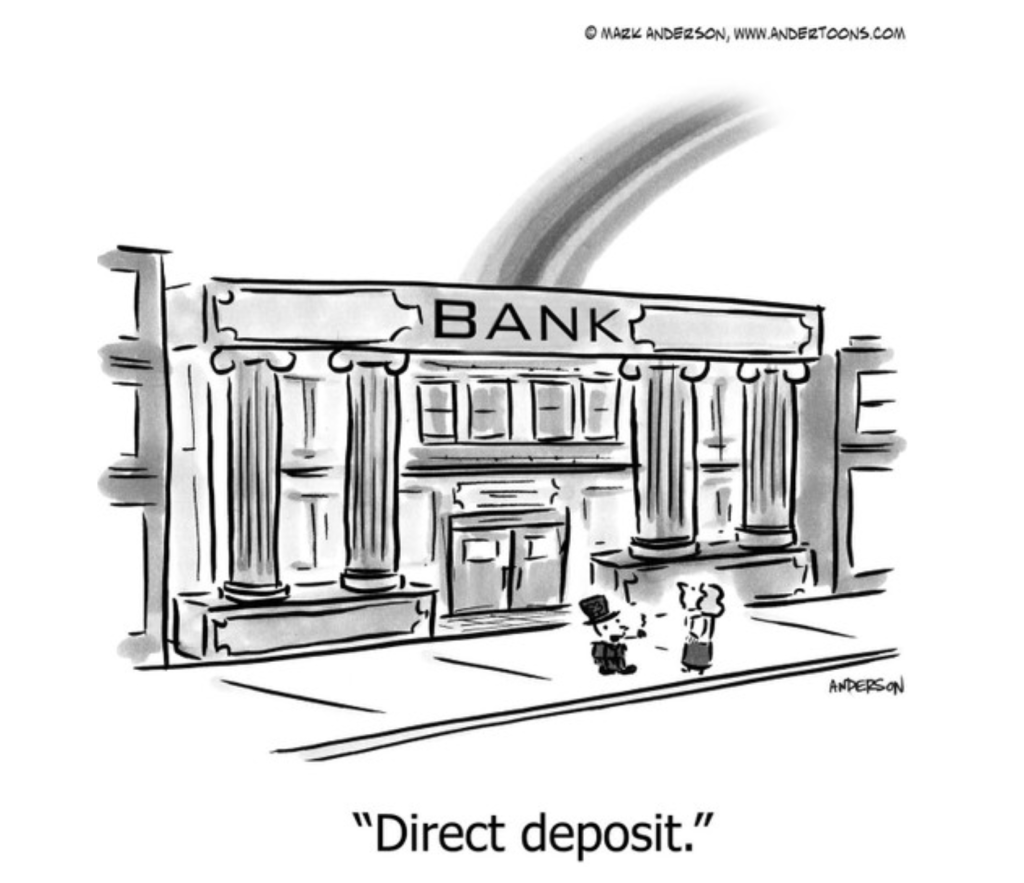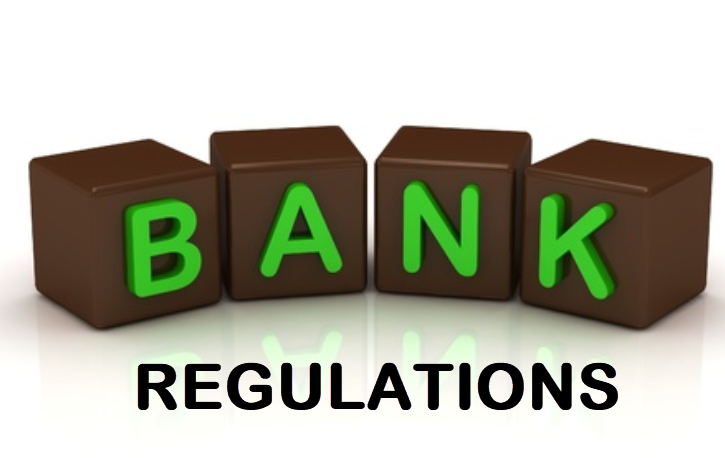 Recently there have been a number of posts on social media regarding the tightening of credit from banks.
Recently there have been a number of posts on social media regarding the tightening of credit from banks.
The reasons given relate to several recent bank failures and attribute this tightening to banks being less willing to take “risks” with depositors’ money.
The truth is that banks do not need deposits, in the form discussed, in order to make loans.
WHAT CREATES DEPOSITS?
 In today’s modern economy, most money takes the form of deposits, but rather than being created by a group of savers entrusting the bank with holding their money, deposits are actually created when banks extend credit, which means making loans.
In today’s modern economy, most money takes the form of deposits, but rather than being created by a group of savers entrusting the bank with holding their money, deposits are actually created when banks extend credit, which means making loans.
As Joseph Schumpeter, a famous Austrian economist, once wrote; “It is much more realistic to say that the banks create credit; that is, that they create deposits in their act of lending than to say that they lend the deposits that have been entrusted to them.”
When a bank makes a loan, there are two corresponding entries that are made on its balance sheet, one on the asset side and one on the liabilities side.
The loan counts as an asset to the bank, and it is simultaneously offset by a newly created deposit, which is a liability of the bank to the deposit holder.
Contrary to popular thinking, loans create deposits.
WHAT CONSTRAINS BANKS?
If loans create deposits, then are banks creating money, which is the sole right of the central bank? The answer is maybe. The central bank controls the money supply by establishing financial reserves for each bank. As loans and deposits increase, the reserves that the bank must hold also increase.
 The reserve ratio, set by the central bank, is the percentage of a commercial bank’s deposits that it must keep in cash as a reserve in case of mass customer withdrawals. In the U.S., the Fed uses the reserve ratio as an important monetary policy tool to increase or decrease the economy’s money supply.
The reserve ratio, set by the central bank, is the percentage of a commercial bank’s deposits that it must keep in cash as a reserve in case of mass customer withdrawals. In the U.S., the Fed uses the reserve ratio as an important monetary policy tool to increase or decrease the economy’s money supply.
The truth is, however, is that the reserve requirement does not act as a binding constraint on banks’ ability to lend. The reality is that banks often first extend loans and then look for the required reserves later.
But, as we have recently seen, if there should be a “bank run”, where most or all depositors all at once demand their money, the demand may exceed the reserves on hand, leading to a potential bank failure.
THE RISK/RETURN ANALYSIS …
So, if bank lending is not constricted by the reserve requirement, then do banks face any constraint at all? The answer is yes, the first being profitability.
 Given a certain demand for loans, banks base their lending decisions on their perception of the risk/return tradeoffs. This is one of the main reasons to match the lending institution (bank) to the requirement of the loan requested.
Given a certain demand for loans, banks base their lending decisions on their perception of the risk/return tradeoffs. This is one of the main reasons to match the lending institution (bank) to the requirement of the loan requested.
Different lending institutions have differing views of the risk/return tradeoff. For example, certain lenders believe that commercial construction is too risky due to the requirements for progress payments and retainage in the contracts.
These lenders believe that recovery would be difficult in the case of a loan that defaults. Other lenders have industries that they both favor and deem as too risky.
If bank lending is constrained by anything at all, it is capital requirements, not reserve requirements.
RECENT BANK FAILURES …
Since capital requirements are specified as a ratio whose denominator consists of risk-weighted assets, they depend on how risk is measured, which in turn is dependent on subjective human judgment.
Subjective judgment combined with ever-increasing profit demands may lead some banks to underestimate the riskiness of their assets.
 Thus, even with regulatory capital requirements, there remains a large amount of flexibility for a bank to lend. This was, in large part, what caused the recent bank failures.
Thus, even with regulatory capital requirements, there remains a large amount of flexibility for a bank to lend. This was, in large part, what caused the recent bank failures.
Before deciding to make a loan, a Bank does a thorough credit check on an individual or institution. In the case of lending to an institution, a lender will review the institution’s balance sheet, profit and loss statement, credit history, cash flow, and in many cases, the value of the company’s assets that can be used as collateral against the risk of the loan.
And, of course, the reason for the loan. They will then measure the results of their due diligence against their institution’s risk/return profile.
TIGHTENING CREDIT CAUSES …
 The bottom line is that banks do not create loans from reserves or bank deposits. Banks create a loan asset and a deposit liability on their balance sheets.
The bottom line is that banks do not create loans from reserves or bank deposits. Banks create a loan asset and a deposit liability on their balance sheets.
The loan creates a deposit of which reserves need to be held against. Although banks don’t need your money to make loans, they do want your money.
As discussed, banks often lend first and look for reserves later. But they do look for the reserves.
The tightening credit that we appear to be seeing in the small and medium business market is due to both risk/return profiles changing at many banks and the increasing capital requirements being placed on some banks by the Fed.
If you perceive potential difficulty in obtaining a new loan or loan renewal in this changing market, it’s always a good idea to ask for help.
Revitalization Partners specializes in improving the operational and financial results of companies and providing hands-on expertise in virtually every circumstance, with a focus on small and mid-market organizations. Whether your requirement is Interim Management, a Business Assessment, Revitalization and Reengineering, a State Receivership or Bankruptcy Support, we focus on giving you the best resolution in the fastest time with the highest possible return.


